- / -
EMSC3025/6025: Remote Sensing of Water Resources
Dr. Sia Ghelichkhan
- / -

Aquifers
EMSC3025/6025
Dr. Sia Ghelichkhan
Objectives
By the end of this lecture, you should be able to:
Aquifer Classification:
- Define aquifers as the fundamental unit of groundwater hydrology
- Distinguish between unconfined, confined, and perched aquifers
- Classify confining beds: aquifuge, aquiclude, aquitard, and real-world aquitardifers
Aquifer Properties:
- Calculate transmissivity (
T = Kb ) and storativity (S ) - Explain specific storage, specific yield, and specific retention
- Compare storage mechanisms in confined vs unconfined aquifers
Objectives
By the end of this lecture, you should be able to:
Aquifer Systems:
- Identify major aquifer types: basin-fill, fluvial, semiconsolidated, sandstone, and carbonate-rock aquifers
- Understand how depositional environments control aquifer properties
- Recognise karst features: sinkholes, solution conduits, and cave systems
- Apply concepts to real-world examples (Dakota Sandstone, Gulf Coast, Floridan aquifer system)
Introduction
- Just as the catchment is the basic unit of surface hydrology, the aquifer is the fundamental unit of groundwater hydrology.
- Aquifers are defined by their hydraulic properties rather than strictly by geology.
- Understanding aquifer types and properties is crucial for:
- Groundwater management
- Well design and sustainability
- Resource assessment
Key concept
An aquifer’s definition depends on context—what’s considered an aquifer in one region might be a confining bed in another.
Defining an Aquifer
An aquifer is “a lithologic unit or combination of lithologic units capable of yielding water to pumped wells or springs”
— Domenico (1972)
- An aquifer can be:
- Coextensive with geologic formations
- A group of formations
- Part of a formation
- Independent of geologic units (cutting across formations)
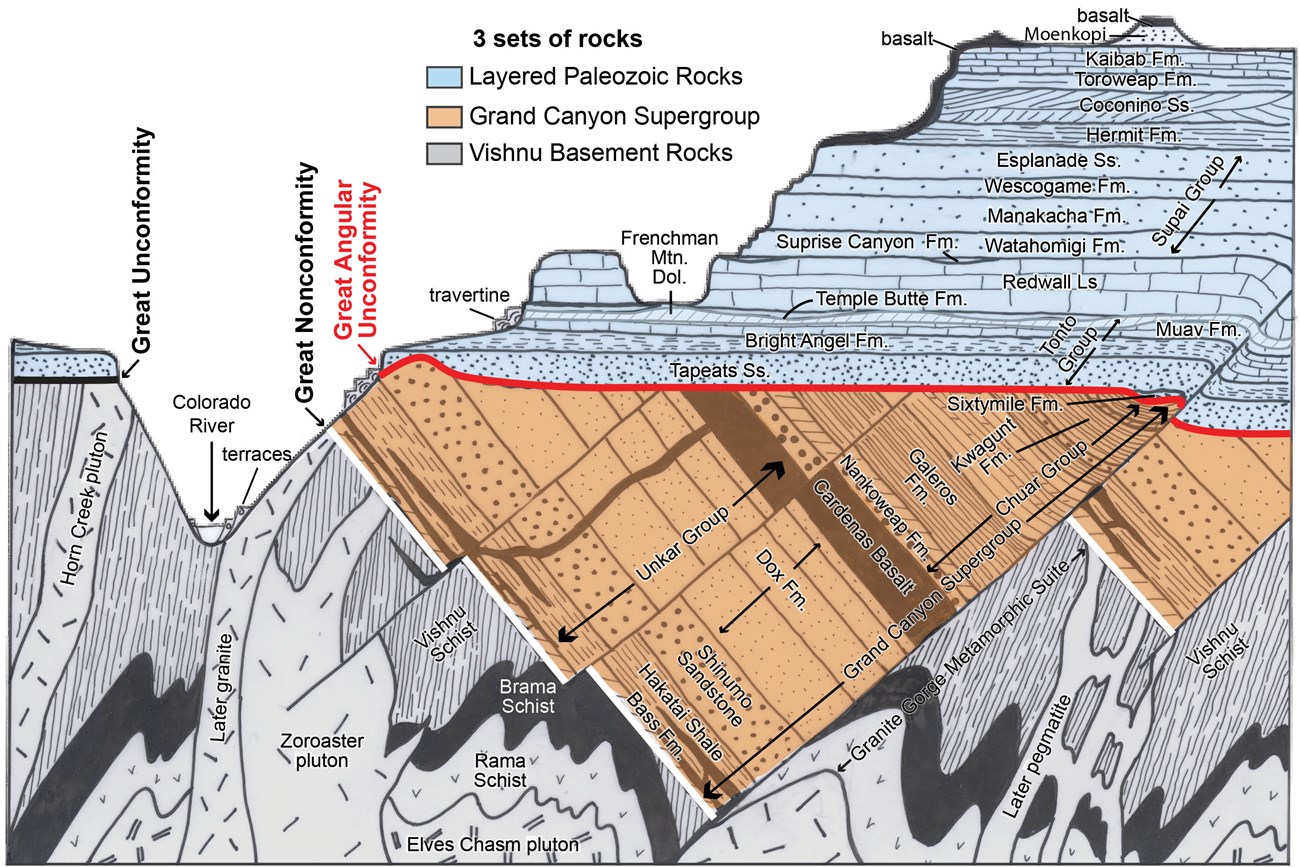
Confining Beds
- Units of low permeability that bound an aquifer are called confining beds.
- The designation is context-dependent:
- In areas with prolific aquifers → low permeability unit = confining bed
- In groundwater-poor regions → same deposit might be considered an aquifer
Important note
In practice, this ambiguity is resolved by explicitly defining hydraulic conductivity or porosity values that characterise the unit.
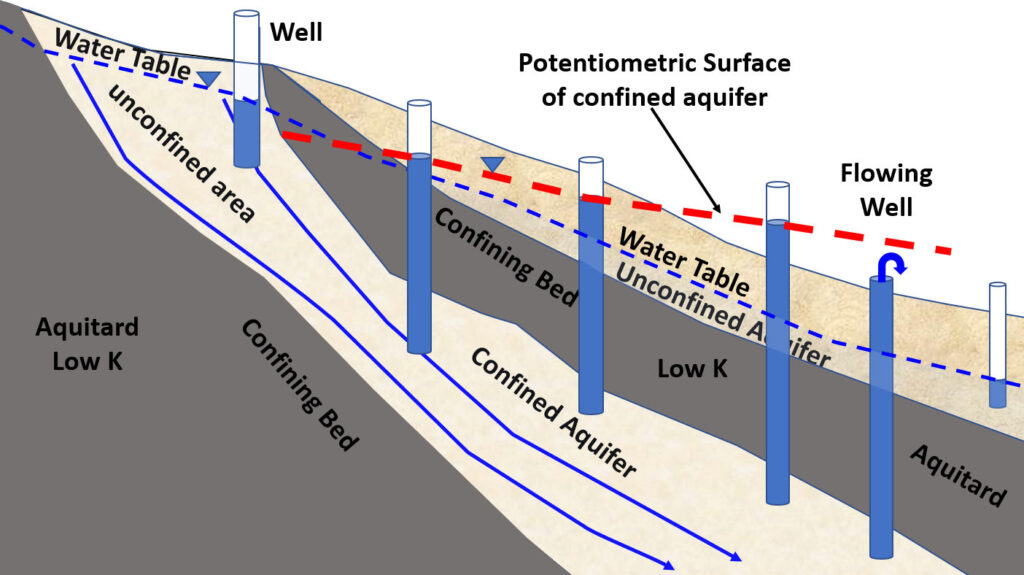
Unconfined Aquifers
- Also called water table aquifers
- The water table forms the upper boundary
- No confining layer above
- Wells or piezometers installed in unconfined aquifers approximately define the water table position
- Water is under atmospheric pressure at the water table
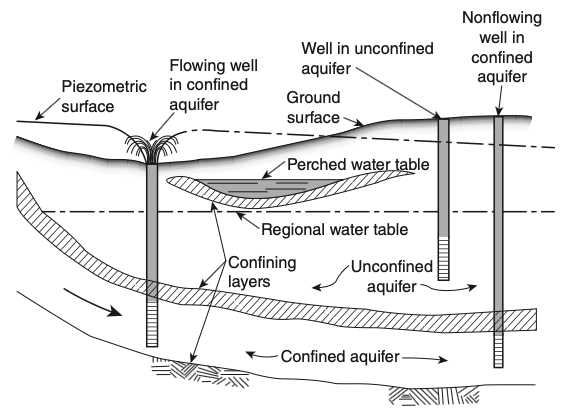
Confined Aquifers
- Also called artesian aquifers
- Bounded by confining beds on both top and bottom
- Water is under pressure greater than atmospheric
- The water level in a well occurs above the upper boundary of the aquifer
- Occasionally, water level occurs above ground surface (flowing artesian well)

Perched Aquifers
- An unconfined aquifer that develops above the regional water table
- Forms on top of a low hydraulic conductivity layer
- An unsaturated zone exists below the perched aquifer
- Often temporary or seasonal
- Important for local water supply in some areas

Key feature: Unsaturated zone both above and below the perched zone
Comparing Aquifer Types
| Aquifer Type | Upper Boundary | Lower Boundary | Pressure | Water Level |
|---|---|---|---|---|
| Unconfined | Water table (free surface) | Confining bed or impermeable layer | Atmospheric at water table | At water table |
| Confined | Confining bed | Confining bed | Above atmospheric | Above aquifer top |
| Perched | Water table | Low-K layer (perching layer) | Atmospheric at water table | Above regional water table |
Types of Confining Beds
Different Classifications of Confining Beds
Three terms are occasionally used to describe different types of confining beds:
Aquifuge
- The ultimate low hydraulic conductivity unit
- Extremely poor conductor of groundwater
- No storage capacity
- Example: intact unfractured crystalline rock
Aquiclude
- Similarly low permeability as aquifuge
- Able to store water (has porosity)
- Transmits water very slowly
- Example: clay layers
Aquitard
- A low permeability unit (leaky confining bed)
- Can store and transmit water between adjacent aquifers
- Stored water available to wells in nearby aquifers
- Example: silty clay layers
The Role of Aquitards
Aquitards play important dual roles:
- Influence rates of recharge between aquifer layers
- Can protect underlying aquifers from contaminants migrating downward from the ground surface
- Act as a barrier to vertical contaminant transport
- Provide slow release of water to adjacent aquifers during pumping
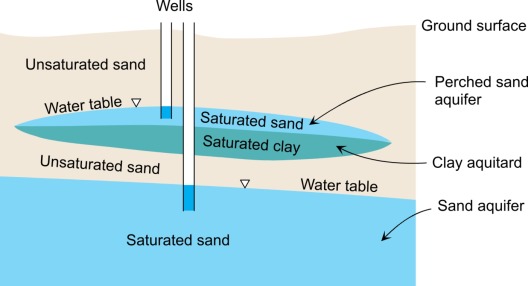
The Complexity of Real Aquitards
- Detailed characterisation in the midcontinent region of North America shows that simple concepts don’t capture reality.
- Runkel et al. (2018) use the term “aquitardifers” to describe confining beds that behave both as an aquitard and aquifer at the same place.
Key insight
Real confining beds are often more complex than simple one-dimensional models suggest.
Characteristics of Aquitardifers
Extreme anisotropy in hydraulic conductivity:
Horizontal direction:
- Permeable partings parallel to bedding
- Can transmit water horizontally like an aquifer
Vertical direction:
- Layering of low permeability units
- Sufficiently low
K_v to inhibit vertical transport of contaminants
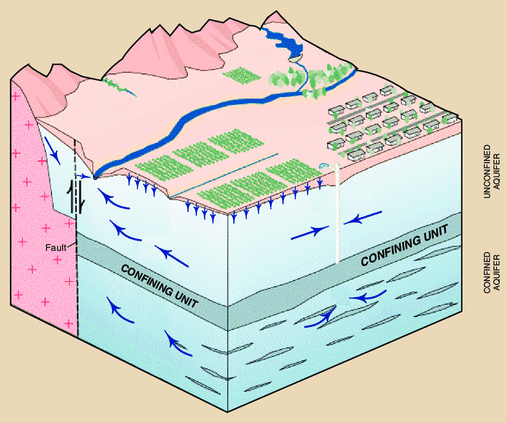
Additional Complexity: Fractures
In some shallow settings, aquitardifers develop vertical fractures:
- Create fast-flow pathways
- Can extend over relatively large areas
- Provide direct connection between surface and deeper units
- Completely change the protective function of the confining bed
- Challenge simple predictions of contaminant transport
Management implication
Detailed site characterisation is essential—simple textbook models may not apply.
Key Aquifer Properties
Two Important Aquifer Properties
When a pump is turned on in a well:
- Water level in the well casing (and hydraulic head) is reduced
- This causes groundwater to flow from the aquifer into the well
- Much of the pumped water initially comes from “storage” in the aquifer
Therefore, aquifers have at least two important characteristics:
- Ability to store groundwater
- Ability to transmit this water to a nearby well
Key concept
These properties depend to an important extent on the geologic setting.
Transmissivity
Definition
The rate at which water of prevailing kinematic viscosity is transmitted through a unit width of the aquifer under a unit hydraulic gradient.
- Similar concept to hydraulic conductivity
- Main difference: applies across the vertical thickness of an aquifer
- Integrates conductivity over aquifer thickness
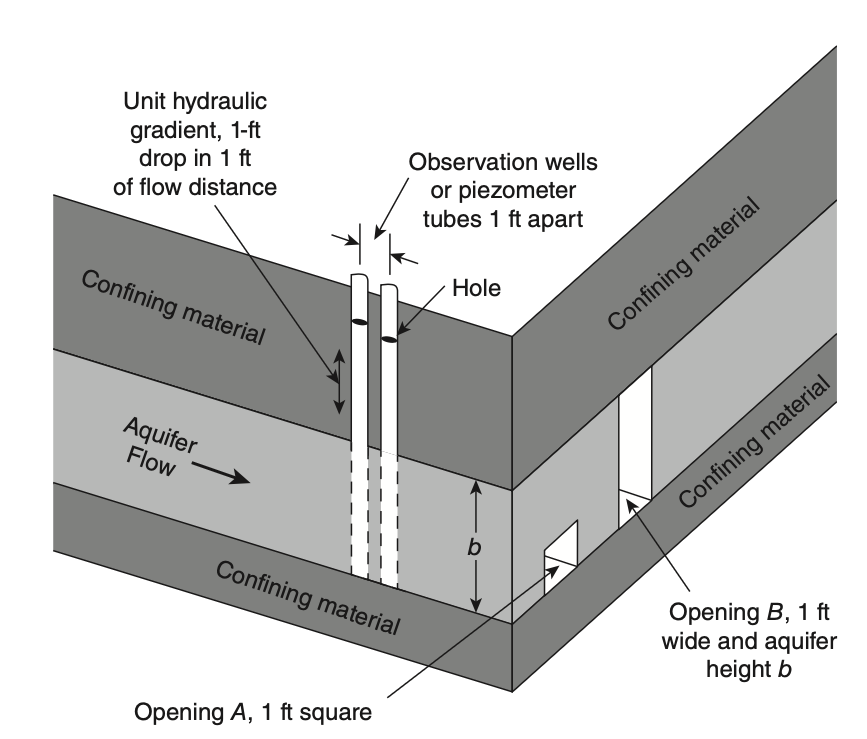
Transmissivity Equation
If the thickness of the aquifer is
Where:
T = transmissivity[L^2/T] K = hydraulic conductivity[L/T] b = aquifer thickness[L]
Units: m²/day, ft²/day, or gpd/ft (gallons per day per foot)
Physical meaning
Transmissivity tells you how much water can flow through the entire thickness of an aquifer per unit width.
Darcy’s Law for Aquifers
For a homogeneous confined aquifer, Darcy’s equation can be written in terms of transmissivity:
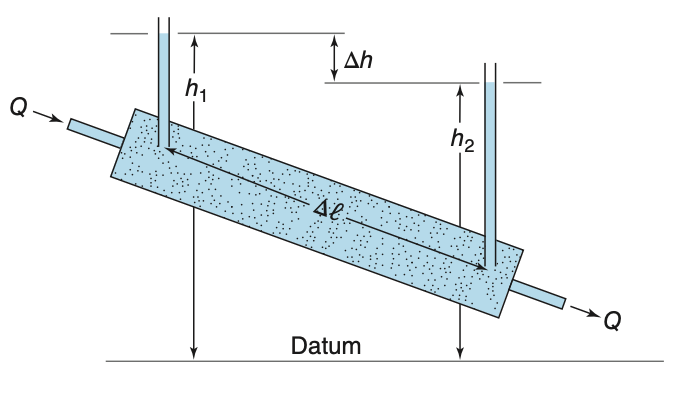
Apply Darcy’s law across the aquifer:
Where:
Q = discharge [L^3/T ]T = transmissivity [L^2/T ]W = width perpendicular to flow [L ]i = hydraulic gradient [dimensionless]
Storativity and Specific Storage
Aquifers can store water. How this storage is accomplished differs depending upon whether the aquifer is confined or unconfined.
Confined aquifer — Two mechanisms supply water:
- Water expansion: Lower pressure → water molecules expand slightly
- Aquifer compression: Lower water pressure → less support for skeleton → grains pushed closer together → squeezes water out
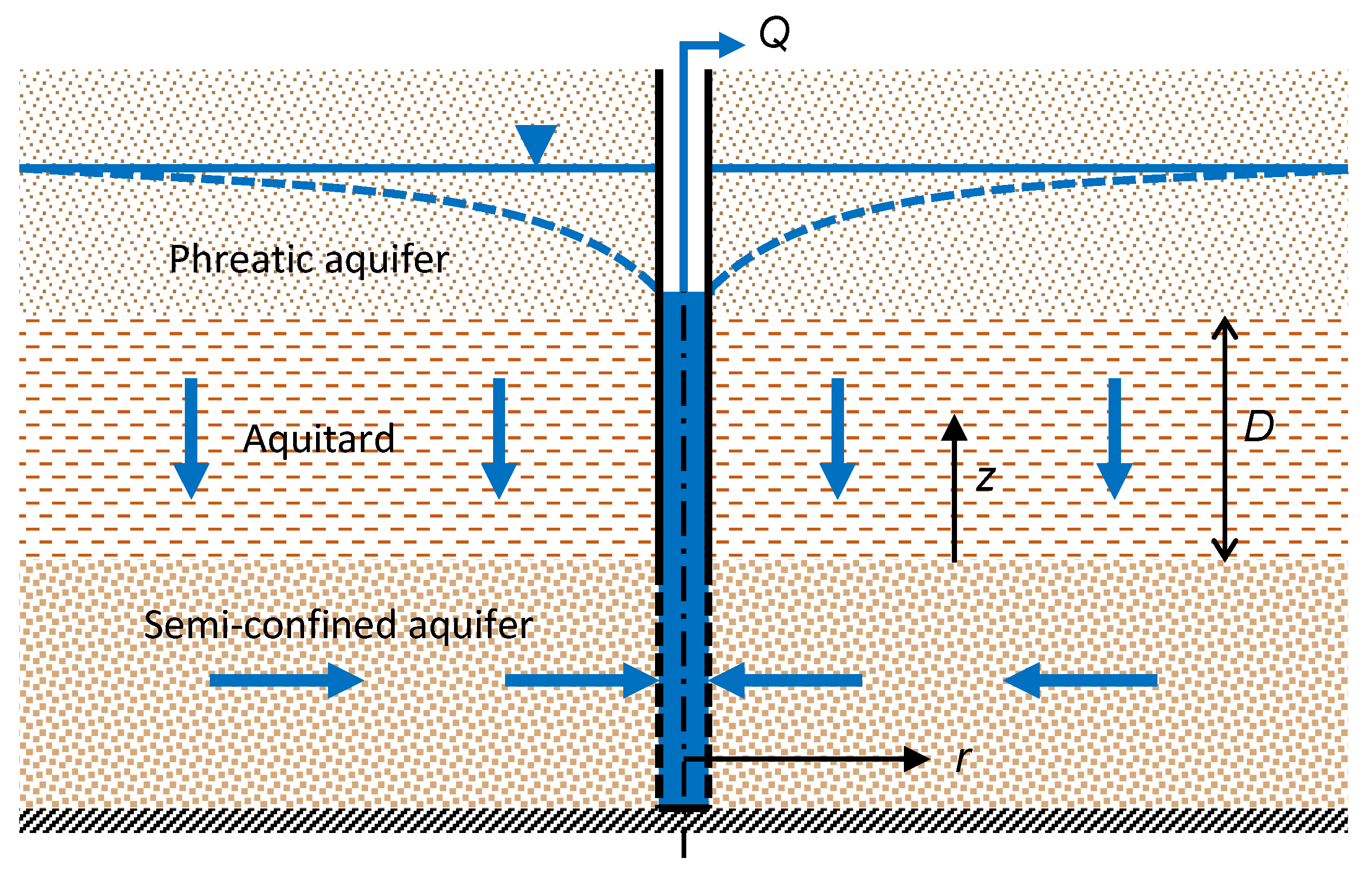
Understanding Aquifer Compression
Before pumping:
- Water pressure holds grains apart
- Aquifer skeleton is supported
- Pore space is at maximum
During pumping (head declines):
- Water pressure decreases
- Weight of overlying rocks pushes down
- Grains move closer together
- Pore space reduces → water squeezed out
Result: Only small amounts of water released (
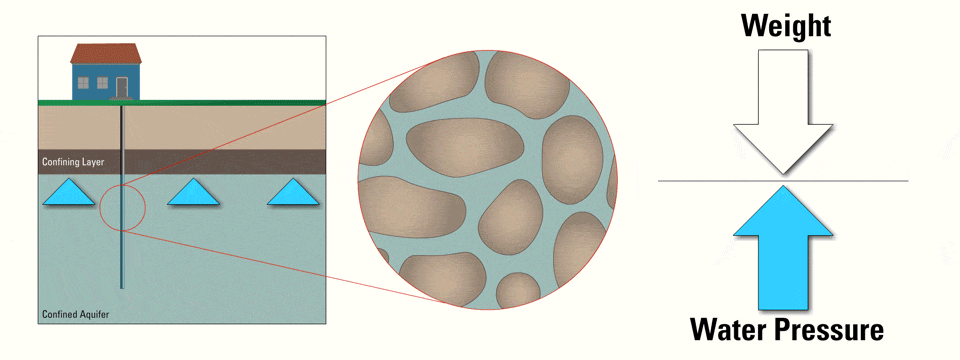
Land Subsidence: Permanent Compression
When pumping is excessive or prolonged:
- Initial compression is elastic (recoverable)
- Continued compression becomes plastic (permanent)
- Aquifer structure permanently altered
- Land surface subsides
Why clay layers are critical:
- Clay is ~1000× more compressible than rock
- Major contributor to subsidence
- Once compressed, cannot recover
Real-world example
Houston, Texas:
- Groundwater depletion from Gulf Coast aquifer
- Land subsided >9 ft (>2.75 m)
- Damage to infrastructure
- Increased flooding risk
Storage in Unconfined Aquifers
Unconfined aquifer:
- Main source of water is drainage of water from pores as the water table declines
- Much more water released per unit decline in head
- For a comparable unit decline in hydraulic head, an unconfined aquifer releases much more water from storage than a confined aquifer
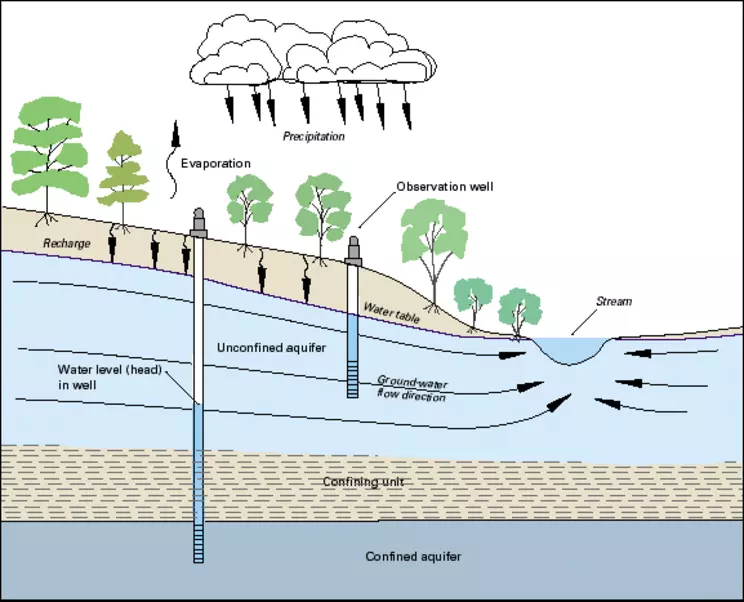
Storativity Definition
Storativity (
- Dimensionless quantity
- For confined aquifers:
S ranges between10^{-3} to10^{-5} - For unconfined aquifers:
S (or specific yield) ranges between0.01 to0.30
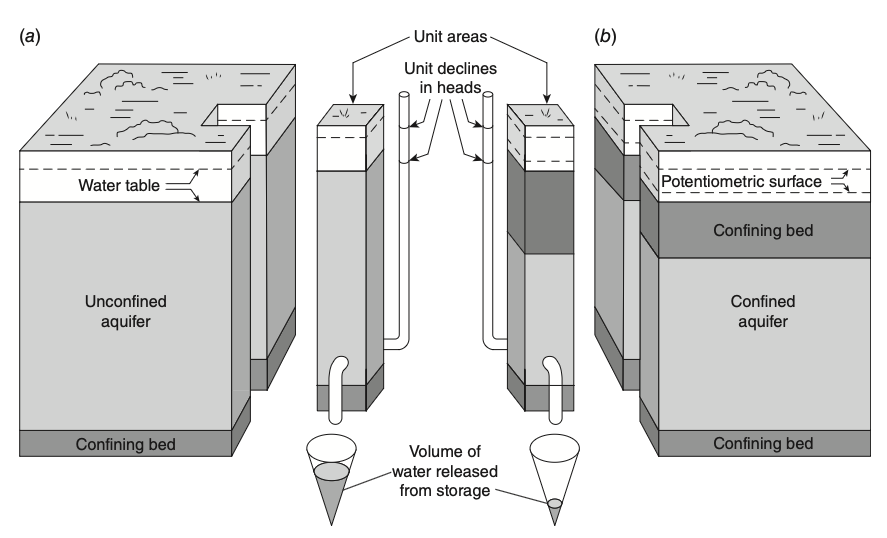
Specific Storage
Specific storage (
Units:
Relationship between
where
Visual Summary: Storativity

Comparing Storage Properties
| Property | Symbol | Definition | Units | Typical Values |
|---|---|---|---|---|
| Specific Storage | Storage per unit volume | |||
| Storativity (confined) | Storage per unit area | Dimensionless | ||
| Specific Yield (unconfined) | Drainable porosity | Dimensionless |
Mathematical Formulation of Storage
Specific Storage in Confined Aquifers
For a confined aquifer, specific storage reflects storage from:
- Compression of the granular matrix
- Expansion of water
The mathematical definition (Domenico and Schwartz, 1998):
Where:
\rho_w = density of water[ML^{-3}] g = gravitational constant (9.81 m/sec²)[LT^{-2}] n = porosity of the aquifer\beta_p = vertical compressibility of rock matrix\beta_w = compressibility of water
Compressibility of Water and Matrix
Compressibility (
Units: inverse of pressure [
Key insight:
- Higher compressibility = more compressible
- Lower compressibility = more rigid/incompressible
Water compressibility (
4.4 \times 10^{-10} m²/N at 25°C
Material property comparison
Clay is ~1000× more compressible than sound rock
This is why clay layers are major contributors to land subsidence!
Compressibility Values for Earth Materials
Geologic Materials (matrix compressibility
| Material | Compressibility (m²/N) |
|---|---|
| Clay | |
| Sand | |
| Gravel | |
| Jointed Rock | |
| Sound Rock |
Fluid compressibility
| Fluid | Compressibility (m²/N) |
|---|---|
| Water |
Note: Loose sediments are more compressible than well-cemented rocks
Using the Specific Storage Equation
The equation
Example calculation:
- Clay layer with
n = 0.3 \beta_p = 1 \times 10^{-7} m²/N\beta_w = 4.4 \times 10^{-10} m²/N\rho_w g \approx 10^4 N/m³
Key observation
The matrix compressibility (
Storage in Unconfined Aquifers
In an unconfined aquifer, the groundwater response to pumping is different from a confined aquifer:
Early time (no significant water level change):
- Water comes from expansion of the water
- Water comes from compression of the grains
- Similar to confined aquifer behaviors
Later on (water table falls):
- Water mainly comes from gravity drainage of pores
- This is the dominant storage mechanism
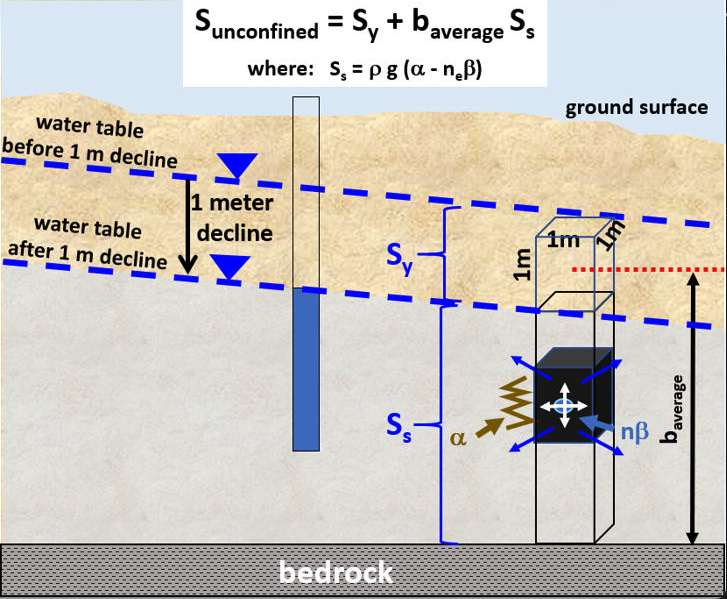
Storativity of Unconfined Aquifers
The storativity of an unconfined aquifer is expressed as:
Where:
S_y = specific yield of the aquiferb = aquifer thicknessS_s = specific storage
Key insight
- Specific yield:
0.1 to0.3 - Product
bS_s :10^{-3} to10^{-5}
Thus, specific yield is the dominant storage term for unconfined aquifers.
Aquifer Type Transitions
In some cases, an aquifer may be:
- Confined at early stage of pumping
- Becomes unconfined at late time
Process:
- Initial pumping creates cone of depression
- Water levels decline
- Head falls below the top of the aquifer
- Aquifer dewaters from the top down
- Storage mechanism changes from elastic to gravity drainage
As the aquifer changes from confined to unconfined, storativity values change accordingly.

Specific Yield and Specific Retention
Specific yield (
Say the ratio of the volume of water yielded from a soil or rock by gravity drainage after being saturated, to the total volume of the soil or rock.
Expressed as the ratio of:
Where:
V_d = volume of water that drains by gravityV_T = total volume of soil or rock (after being saturated)
Specific Retention
Not all water initially present is released from storage.
Specific retention (
Where:
V_r = volume of water retained against gravityV_T = total volume of soil or rock
Important relationship
Porosity is related to specific yield and specific retention by:
The sum equals the total porosity.
Specific Retention Characteristics
Specific retention increases with:
- Decrease in grain size (more surface area)
- Decrease in pore size (stronger capillary forces)
Typical values:
- Coarse gravel:
S_r \approx 0.01 to0.05 - Fine sand:
S_r \approx 0.05 to0.15 - Silt:
S_r \approx 0.15 to0.30 - Clay:
S_r \approx 0.30 to0.50
Inverse relationship
Materials with high specific retention have low specific yield, and vice versa.
This is why clay has high porosity but yields little water!
Examples of Real-World Aquifer Systems
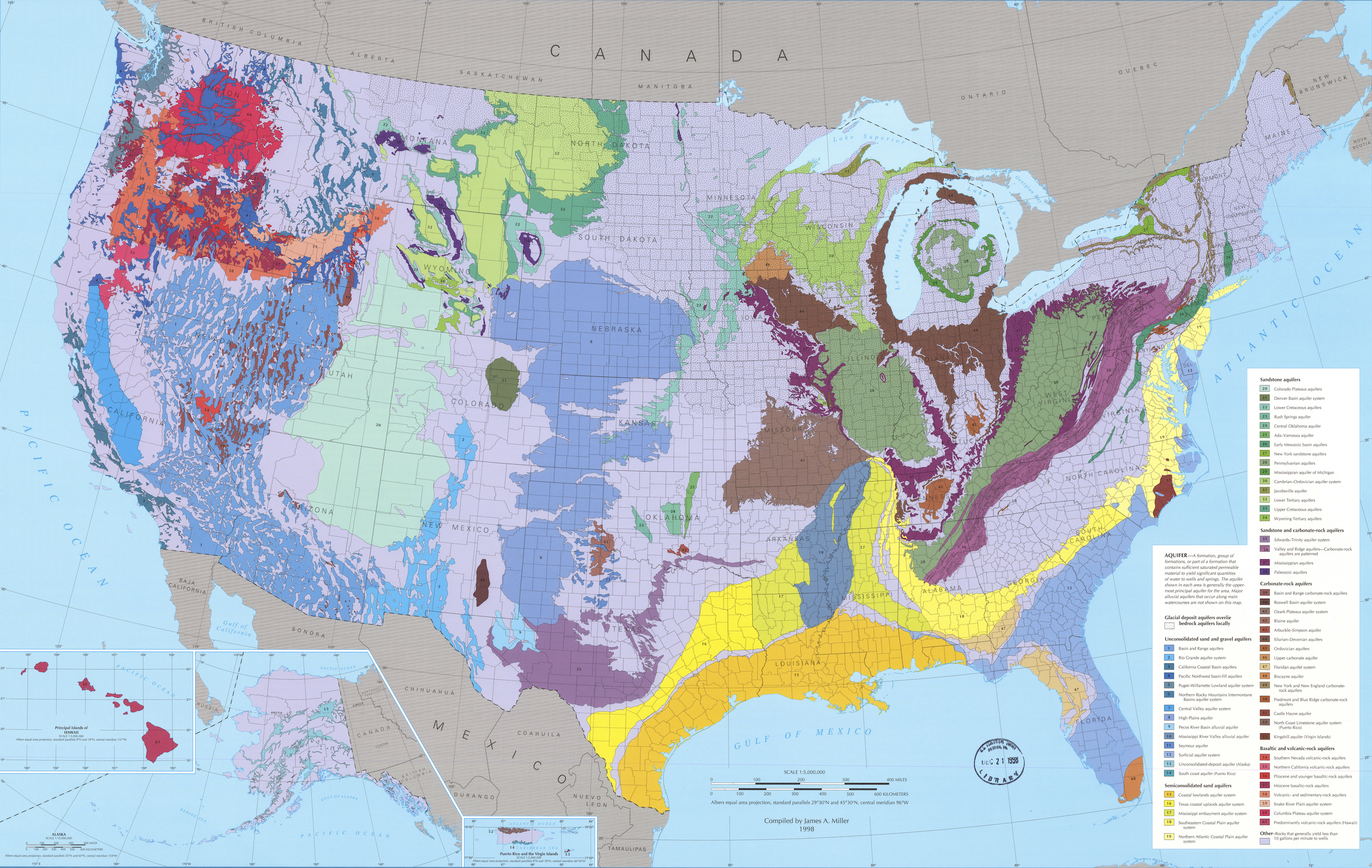
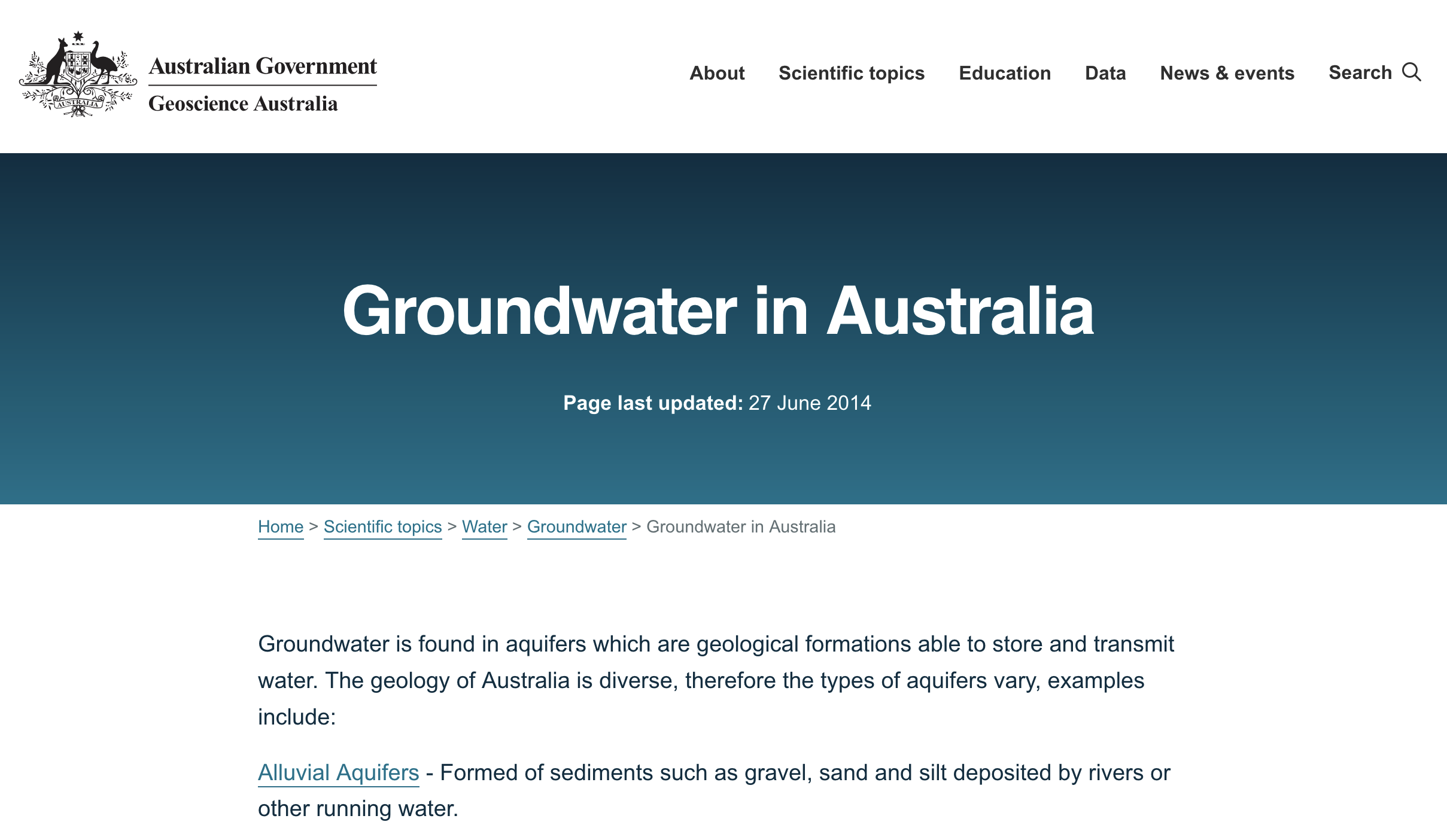
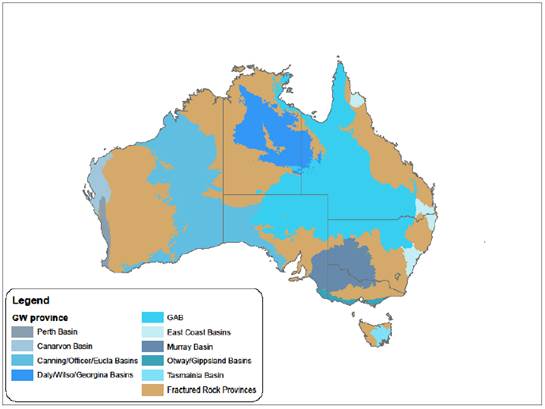
Principal Aquifers in the United States
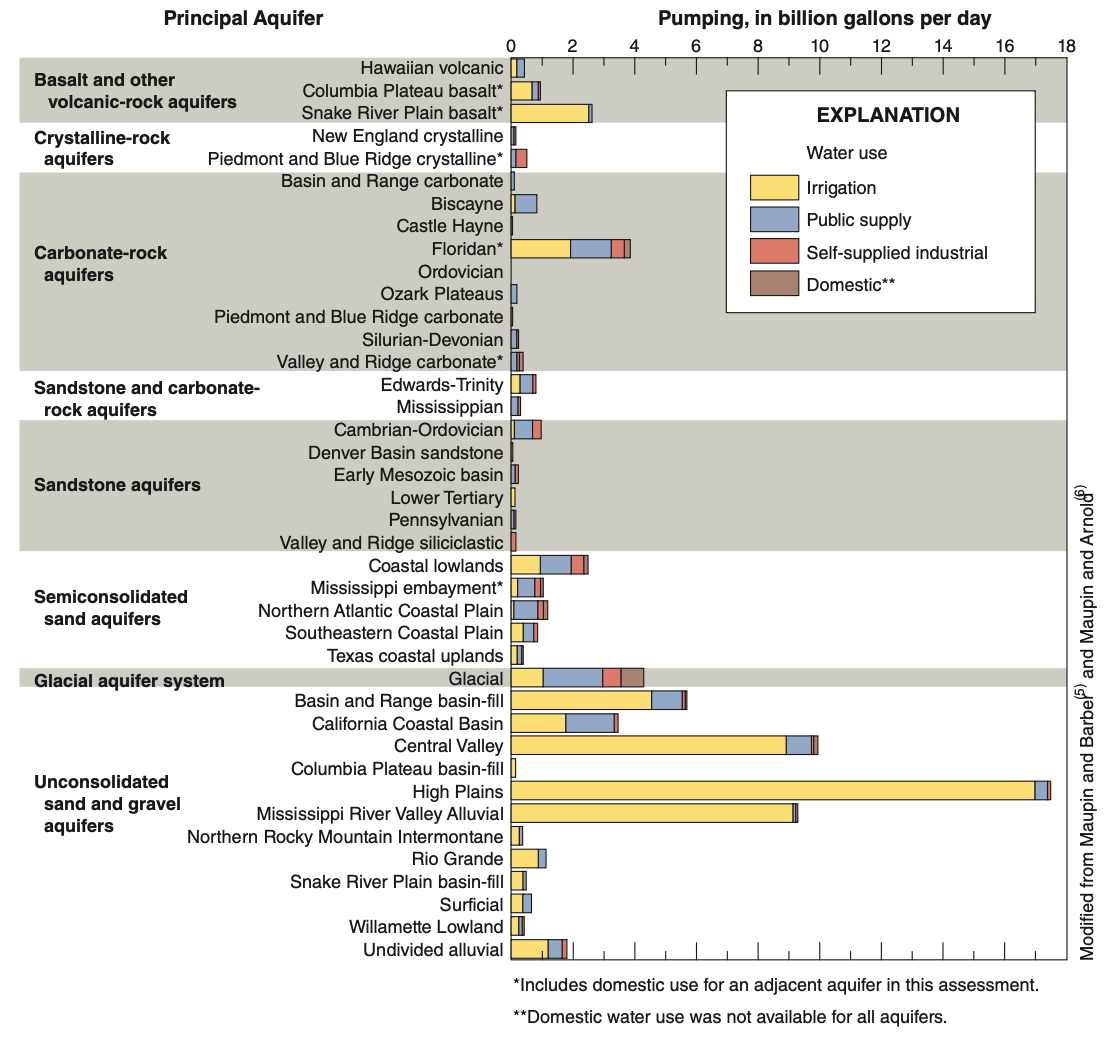
Principal Aquifers in the United States organized by aquifer type and showing pumping rates for different uses
- This collection accounts for about 90% of daily groundwater production in the US.
Unconsolidated Sand and Gravel Aquifers
Characteristics:
- Intergranular porosity
- Primarily unconfined conditions
- High permeability (varies with clay content and sorting)
- Most extensively pumped aquifer type in US
Four main categories:
- Basin/valley-fill: Central Valley (California), Arizona basins
- Blanket sand and gravel: High Plains aquifer (most pumped)
- Glacial deposits: North of glaciation line (outwash, terraces)
- Stream-valley aquifers: Local, small extent (not mapped)
Key properties
- High storage and transmission
- Thicker deposits → more regional flow
- Susceptible to contamination
- Provide much of western US groundwater
US Distribution: Sand and Gravel Aquifers
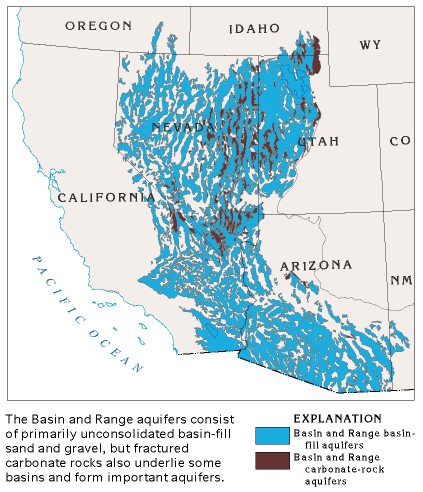
_Basin-fill aquifers concentrated in Basin and Range Province (western US)_
US Distribution: Sandstone Aquifers
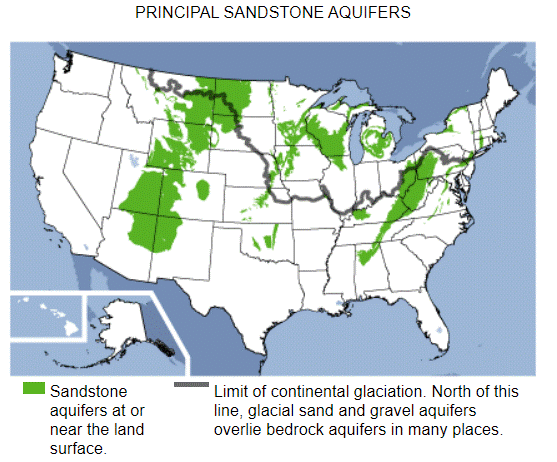
Key characteristics:
- Consolidated sand → reduced porosity
- Joints and fractures transmit most groundwater
- Low to moderate hydraulic conductivity
- Extend over large areas → provide large water quantities
Map note
Shows only shallowest principal aquifer. Deeper, sometimes more productive aquifers may exist below.
US Distribution: Carbonate-Rock Aquifers
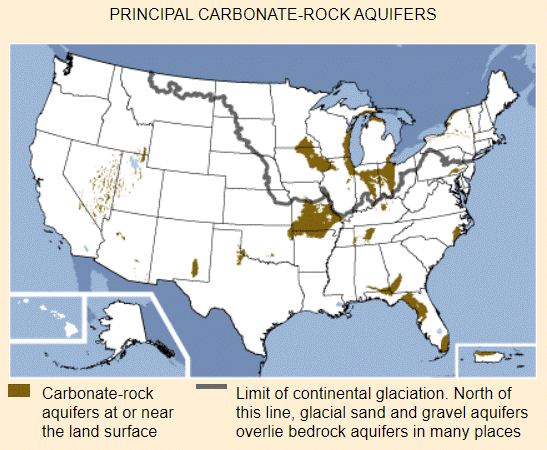
Composition:
- Calcite (CaCO₃) → limestone
- Dolomite (CaMg(CO₃)₂) → dolostone
- Marine origin (shells, corals, algae, precipitates)
Key processes:
- Post-depositional: compaction, cementation, dolomitisation
- Solution enhancement: dissolution by acidic groundwater
- Creates tubes, widened joints, and caverns
Carbonate Aquifer Characteristics
Solution openings range from:
- Small tubes and widened joints
- To caverns tens of meters wide
- Extending hundreds to thousands of meters in length
Hydraulic properties:
- Well-connected networks → large yields to wells
- Undissolved rock between openings → nearly impermeable
- Extreme heterogeneity
Famous example
Floridan aquifer system: One of the most productive aquifer systems in the world, supplies water to millions in Florida
Other Important Aquifer Types
Crystalline-rock aquifers:
- Fractured granite, basalt, metamorphic rocks
- Very low primary porosity
- Flow occurs primarily in fractures
- Secondary porosity controls productivity
- Important in New England, Canadian Shield
- Well yields highly variable
Volcanic-rock aquifers:
- Basalt flows with high permeability
- Flow in cooling fractures and lava tubes
- Vesicular zones store water
- Examples: Hawaiian volcanic, Columbia Plateau
- Can be extremely productive locally
- Complex interbedded structure
Summary of Aquifer Systems
Unconsolidated Aquifers Summary
Basin-Fill Aquifers:
- Structural basins in mountain regions
- Hundreds to thousands of meters thick
- Examples: Basin and Range, Central Valley
- Long, narrow bodies with interbedded materials
- Major water sources in western US
Fluvial Aquifers:
- Deposited by river systems
- Two types: meandering vs braided
- Braided → more continuous and productive
- Long, narrow, thin geometry
- Mississippi River Valley, High Plains
Key characteristics:
- High permeability (varies with sorting)
- Unconfined conditions
- High specific yield (
0.1-0.3 ) - Susceptible to contamination
- Most extensively pumped in US
Categories:
- Basin/valley-fill
- Blanket sand and gravel
- Glacial deposits
- Stream-valley aquifers
Consolidated Aquifers Summary
Semiconsolidated Sediments:
- Gulf Coast aquifer systems
- Wedge-shaped geometry (thicken toward coast)
- Confined updip, unconfined downdip
- Risk: saltwater intrusion, land subsidence
- Example: Houston subsided >9 ft (>2.75 m)
Sandstone Aquifers:
- Cemented sand with reduced porosity
- Flow in fractures and bedding planes
- Low to moderate hydraulic conductivity
- Large areal extent
- Example: Dakota Sandstone (~46% recharge through confining beds)
Carbonate-Rock Aquifers:
- Limestone and dolostone
- Solution-enhanced permeability
- 10 orders of magnitude range in
K - Large yields where well-connected
- Example: Floridan aquifer system
Other Types:
- Crystalline-rock: fractured granite/basalt, flow in fractures
- Volcanic-rock: basalt with cooling fractures and lava tubes
Karst Systems Summary
Formation requirements:
- Chemically aggressive groundwater
- Fractures present for transmission
- Groundwater can drain out
Solution features:
- Start as small conduits (~1 cm)
- Grow to cave size (kilometers long)
- Highest yields at fracture intersections
- Extremely heterogeneous permeability
Karst landforms:
- Sinkholes (dissolution, cover subsidence, cover-collapse)
- Stream sinks (disappearing streams)
- Dry valleys
- Large spring systems
- Underground cave networks
Management challenges:
- Rapid contaminant transport
- Unpredictable flow paths
- Surface-subsurface connectivity
Comparing Major Aquifer Types
| Aquifer Type | Porosity | K Range | Storage | Key Feature | Main Challenge |
|---|---|---|---|---|---|
| Unconsolidated | High (0.25-0.35) | High | Intergranular | Contamination | |
| Basin-fill | High | High-Moderate | High | Thick accumulations | Over-exploitation |
| Fluvial (braided) | High | High | High | Lateral continuity | Variable quality |
| Semiconsolidated | Moderate | Moderate | Moderate | Wedge geometry | Subsidence, saltwater |
| Sandstone | Low-Moderate | Low-Moderate | Fracture flow | Vertical leakage | |
| Carbonate | Variable | 10 orders of magnitude | Variable | Solution conduits | Heterogeneity |
| Karst | Highly variable | Extremely high locally | Low-Moderate | Caves and conduits | Rapid transport |
| Crystalline | Very low | Very low | Very low | Fractures only | Limited yield |
Comparison of principal aquifer characteristics
Summary
Key takeaways from this lecture:
Aquifer Classification:
- Aquifers are the fundamental unit of groundwater hydrology
- Three types: unconfined, confined, perched—each with distinct boundary conditions
- Confining beds range from impermeable (aquifuge) to leaky (aquitard), with complex real-world aquitardifers
Aquifer Properties:
- Transmissivity (
T = Kb ) quantifies ease of transmission; storativity (S ) quantifies storage release - Storage mechanisms: elastic (
S_s ) in confined, gravity drainage (S_y ) in unconfined aquifers - Relationship:
n = S_y + S_r connects porosity to drainable and retained water
Summary
Key takeaways from this lecture:
Real-World Aquifer Systems:
- Basin-fill (Basin and Range): structural basins with thick sediment accumulation
- Fluvial: braided streams create more continuous aquifers than meandering systems
- Semiconsolidated (Gulf Coast): wedge-shaped geometry, saltwater intrusion risk, land subsidence issues
- Sandstone (Dakota): vertical leakage through confining beds dominates recharge (~46%)
- Carbonate-rock: solution enhancement creates 10 orders of magnitude range in hydraulic conductivity
- Karst landscapes: dissolution features create unique surface and subsurface drainage systems
Understanding aquifer diversity enables effective groundwater management and resource protection.